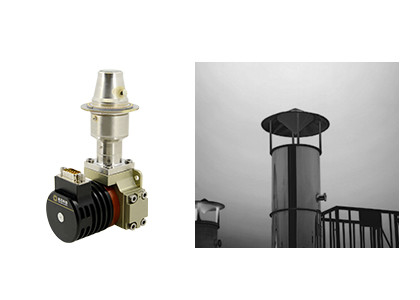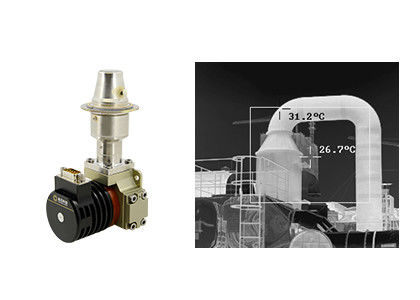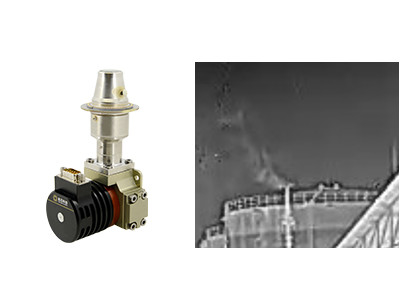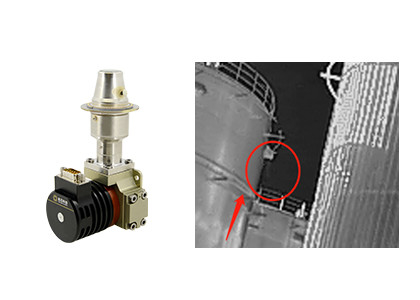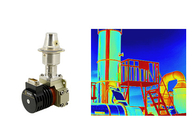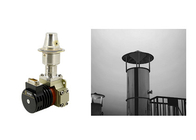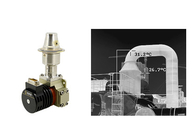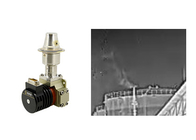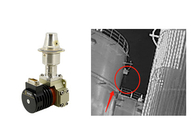-
Thermal Camera Core
-
Thermal Security Camera
-
Drone Thermal Camera
-
EO IR Systems
-
Thermal Imaging Binoculars
-
Infrared Thermal Camera Module
-
High Resolution Thermal Camera Module
-
Cooled Infrared Detectors
-
Optical Gas Imaging
-
Thermal Camera For Fever Detection
-
Cooled Camera Modules
-
Vehicle Mounted Thermal Camera
-
Integrated Dewar Cooler Assembly
-
Uncooled Infrared Detectors
RoHS MWIR Cooled Thermal Camera Sensor For Visualizing Gas Leaks

Contact me for free samples and coupons.
Whatsapp:0086 18588475571
Wechat: 0086 18588475571
Skype: sales10@aixton.com
If you have any concern, we provide 24-hour online help.
x| Function | Gas Leak Detection | Cryo Cooler | RS058/RS058I/LS734 |
|---|---|---|---|
| Detector Resolution | 320x256 | Pixel Size | 30μm |
| NETD | ≤15mK | Spectral Range | 3.2±0.1~3.5±0.1μm |
| Highlight | MWIR Cooled Thermal Camera Sensor,RoHS Thermal Camera Sensor,Visualizing Gas Leak MWIR Sensor |
||
320x256 / 30μm MWIR Cooled Optical Gas Imaging Camera for Visualizing Gas Leaks
C330M-G cooled infrared detector is specially developed for VOCs gas leak detection with the function of converting infrared radiation of target with 3.2~3.5μm wavelength into electrical signal. Its external mechanical interface, optical interface and electronic interface are commonly used and can be expanded. C330M-G can be widely used in atmospheric environment monitoring and gas leakage detection, pollutant discharge, chemical gas detection in petrochemical plants and refineries.
Optical Gas Imaging
• Long range non-contact detection
• High efficient, secure and wide range of gas leak detection
High Sensitivity
• High sensitive cooled infrared detector, quite efficient in application of low gas concentration and slow gas flow
• Effective leak detection includes Alkanes, Alkenes, Alcohols, Benzenes, Ketones and other gases
Designed for Requirements of Users
• Support 12V power supply for explosion-proof certification
• Various cryocoolers available for light weight, low power, long life and high reliability
• Customizable spectral range: 3μm~5μm MWIR (for more gas detection types: CO, CO2 etc.)
| Model | C330M-G | ||
| Sensitive Material | HgCdTe/MCT | ||
| Resolution | 320×256 | ||
| Pixel Size | 30μm | ||
| Spectral Range | 3.2μm±0.1μm~3.5μm±0.1μm (Cusomizable Range: 3μm~5μm) | ||
| Working Mode | Snapshot; ITR Integration Mode; Windows Mode; Anti-blooming | ||
| Charge Capacity | 36Me-/12Me- | ||
| Dynamic Range | ≥80dB | ||
| Number of Output | 1 or 4; Up to 6.6MHz/per Output | ||
| Typical NETD | 10mK (F1.5) | ||
| Effective Pixel Rate | ≥99.5% | ||
| Response Non-uniformity | ≤8% | ||
| Cryocooler | RS058 | RS058I | LS734 |
| Cooler Type | Integral Rotary Stirling Cooler | Integral Rotary Stirling Cooler | Linear Rotary Stirling Cooler |
| Stable Power Consumption | ≤7W | ≤7W | ≤10W |
| Max. Power Consumption | ≤15W | ≤15W | ≤45W |
| Power Supply | 24V DC | 12V DC | 24V DC |
| Cooling Time | ≤6min30s | ≤7min | ≤5min |
| Size (mm) | 142x58.5x71 | 142×58.5×71 | Compressor Φ46×122 Dewar Φ40×114 |
| Weight | ≤600g | ≤600g | ≤1.2kg |
| Working Temperature | -45°C ~ +71°C | ||
The C330M-G gas leak detection cooled MWIR thermal imaging detector is used for customers who have strong development ability. By integrating this cooled thermal sensor, the invisible VOCs (volatile organic compounds) can be detected and visualized so that further damage can be avoided. These gases includes such as: Methane, Ethane, Propane, Butane, Pentane, Hexane, Heptane, Octane, Ethylene, Propylene, Isoprene, Methanol, Ethanol, Butanone, Benzene, Toluene, Xylene, Ethylbenzene etc.
![]()
1.What is infrared thermal imaging?
Infrared thermal imaging is a method of using infrared radiation and thermal energy to gather information about objects, in order to formulate images of them, or get temperature information of the objects, even in low visibility environments.
2.How does Infrared Thermal Imaging Work?
Infrared thermal imaging system is a passive non-contact detection and identification of infrared technology. It focuses the infrared radiation of the scene on the focal plane array infrared detector through the infrared optical system that can pass through infrared radiation. The thermal detector converts the radiation signal of different intensity into the corresponding electrical signal, and then through amplification and video processing, forms the infrared image that can be observed by the naked eyes.




